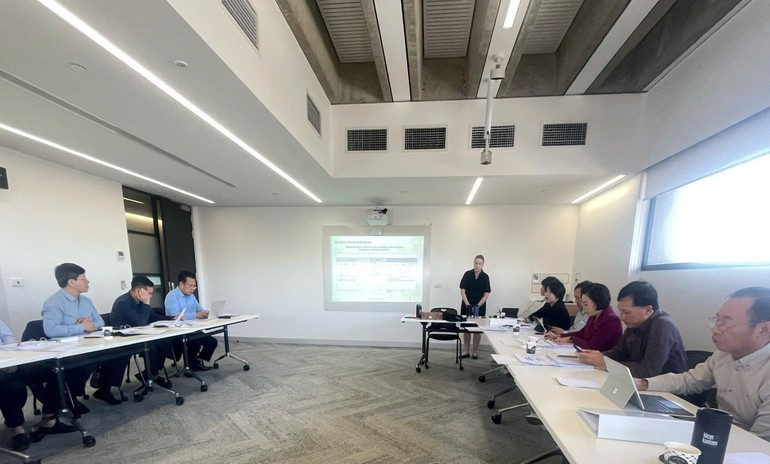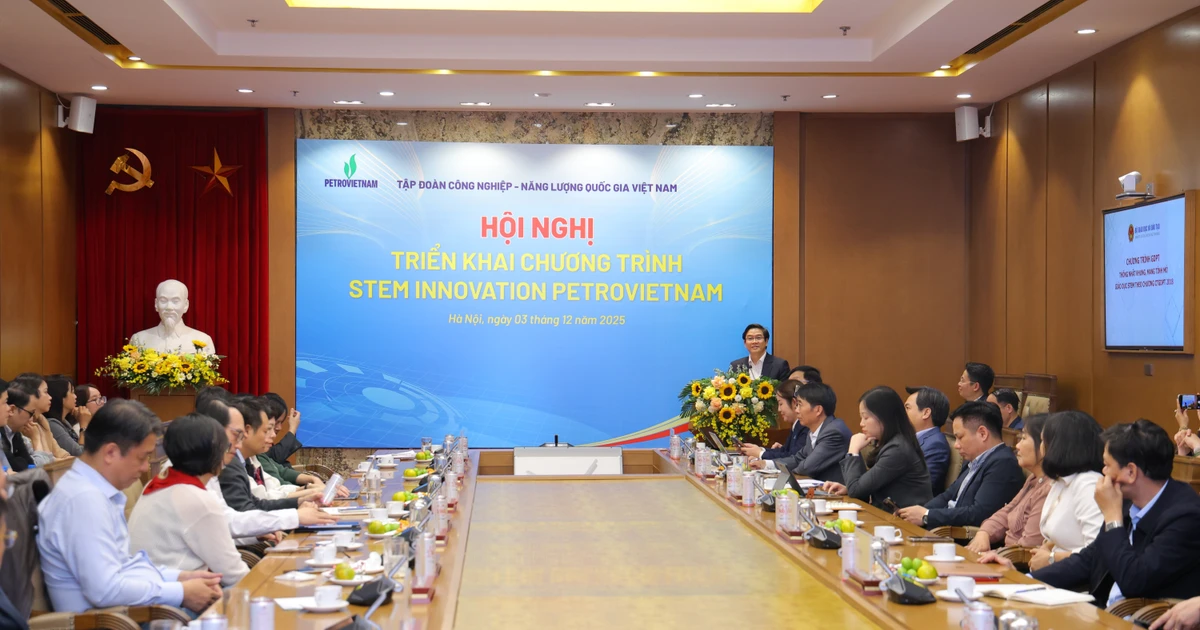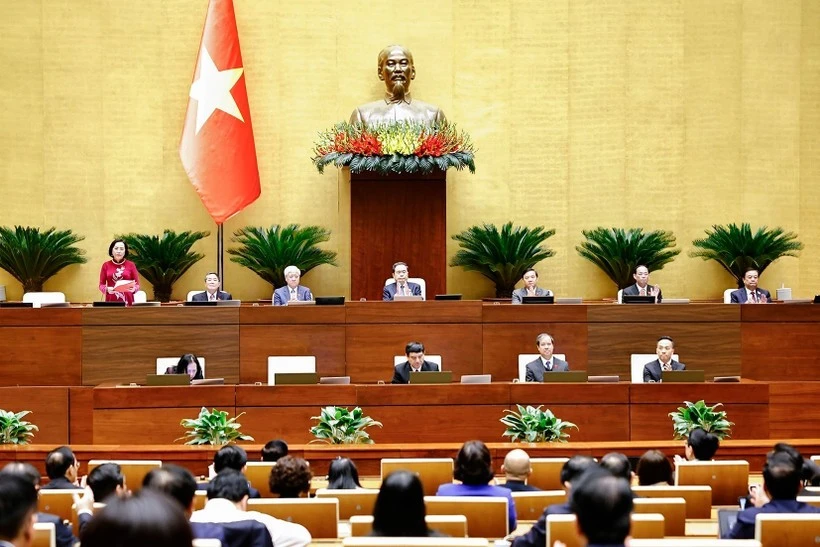Online public services are considered the test of the effectiveness of this process. Lessons from pioneering countries show that for technology to truly serve the people, the decisive factors lie in governance mindset, the digital capacity of officials, and the engagement of the community.
Technology is only a tool
During the short-term training programme on digital transformation and artificial intelligence for leaders and managers from central and local agencies, experts from the University of Technology Sydney (UTS) emphasised that the core of digital transformation does not lie in technological change but in changing the mindset and working methods of those within the public sector system.
Dr Sue Craig of the Australian Institute of Company Directors stated that, for the public sector, digital transformation does not only help reduce costs and shorten procedures but also opens new approaches to governance, service provision, and citizen interaction. When authorities digitise data and redesign processes, they simultaneously change the working culture — shifting from control to service, from administrative command to partnering with citizens.

In Australia, the model for providing public services is designed around citizens’ needs. Technology is only a tool; the more important factors are citizen trust, accessibility, and satisfaction when using digital services.
Federal Member of Parliament Dai Le –— the first Vietnamese Australian elected to the Australian Parliament — shared insights from her electoral area. Fowler has a high proportion of migrants and elderly residents, making the shift to online public services challenging. Digital access among residents is very low. The community still largely uses cash and does not feel safe or familiar with online payment.
Some eastern suburban areas have better connectivity, but most residents, especially the elderly, are unfamiliar with digital platforms, leading to a low rate of completing online procedures. Many people must visit government offices in person to seek help filling out forms. Among vulnerable groups such as the unemployed or those needing benefits, they often use Government Central Link — the government’s service portal — but long waiting times reduce their motivation to use online services.

Another major barrier is language. Public service platforms are only available in English, without versions in local languages or mother tongues of migrant communities. This is a key reason many people refuse or hesitate to access digital services.
According to Dai Le, all public service reforms must be based on the needs, capacities and habits of citizens rather than enforcing digitalisation through administrative orders. Therefore, governments must listen to citizens and support them with more accessible tools, such as integrating translation functions directly into platforms to help people understand and complete procedures more easily. Maintaining cash payment options is also essential to ensure convenience, especially for the elderly and migrant communities.

Based on Australia’s experience, it is clear that digital transformation of public services cannot be measured only by the number of procedures put online but must be assessed by the percentage of citizens who can actually use them, feel satisfied, and trust the system.
Strengthening digital capacity for citizens
In Viet Nam, online public services have been implemented across most localities, though effectiveness varies. Some provinces have made significant progress in indicators measuring the quality of service for citizens and businesses.
According to the Tay Ninh Provincial People’s Committee report on November 1, 2025, the score on the National Public Service Portal reached 89.77/100, an increase of 2.85 points compared to the previous week and rising 12 places (from rank 22 to rank 10 out of 34 provinces and cities) — the highest improvement to date. Notably, the province ranked 8/34 at certain times in early November.
By November 10, 2025, the score rose further to 90.07/100, maintaining its position in the national top 10. All component indicators continued increasing, with the digitalisation of records achieving 21.47 points — the highest among all 34 provinces and cities — demonstrating strong efforts to standardise processes and promote digital handling of administrative records.
In reality, as Nguyen Thi Xuan Huong, Standing Committee Member and Head of the Commission for Communication and Mass Mobilisation of the Tay Ninh Provincial Party Committee, shared that although online platforms are developing, officials still have to complete almost all online steps on behalf of citizens. Most people, especially in rural areas or elderly citizens, are unfamiliar with technology and do not understand digital procedures, making it near impossible for them to complete online public services themselves. This creates significant pressure on staff, increasing their workloads compared to the pre-digitalisation period.
Not only citizens but the digital capacity of grassroots officials is also uneven, leading to online services not being implemented as effectively as expected.
Nguyen Thi Xuan Huong emphasised that for digital transformation to be meaningful, digital literacy must be expanded widely among citizens while strengthening digital capacity for officials. Only then can effectiveness be ensured, pressure reduced, and widespread public participation in digital transformation achieved.
Sharing the same view, Nguyen Viet Ha, Director of the Department of Information Technology and Digital Transformation (Ministry of Finance), stated that although the finance sector handles the largest volume of electronic transactions in the country, its greatest challenge is that the digital capacity of citizens and businesses has not kept pace with the sector’s rapid digitalisation. Many citizens are unfamiliar with online processes, especially steps such as identification, logging in, digital signatures, uploading documents, and electronic payments. This forces them to visit financial offices for direct assistance, increasing the workload of staff instead of reducing it as expected.

Additionally, although the Ministry of Finance has made major investments in its digital systems, achieving “one-time data declaration for multiple procedures” remains challenging due to issues in data connectivity and sharing between ministries, sectors, and localities. When data is not synchronised, citizens must re-enter information or submit paper documents, diminishing the digital experience.

Nguyen Viet Ha noted that to ensure meaningful digital transformation, the Ministry of Finance is focusing on two directions: continuing to improve digital platforms, integrate data, and simplify processes so citizens can interact more easily; and collaborating with localities to strengthen digital skills for both citizens and grassroots officials and help them master basic operations, thereby increasing their ability to use online public services independently and reducing pressure on management agencies.
He also emphasised that digital transformation in the finance sector will only achieve maximum effectiveness when the entire political system participates and especially when citizens truly take ownership of using technology and services instead of relying on officials.
Operational experiences from public services in Australia and Viet Nam illustrate the point made by Dr Sue Craig (UTS lecturer): digital transformation is a process of changing organisational culture, not merely adopting new technology. No plan, regardless of how modern the tools are, will succeed if users do not understand, trust, nor want to use the system. Therefore, digital transformation in the public sector requires a comprehensive strategy: retraining officials, redesigning processes, and placing citizen experience as the ultimate measure.
















